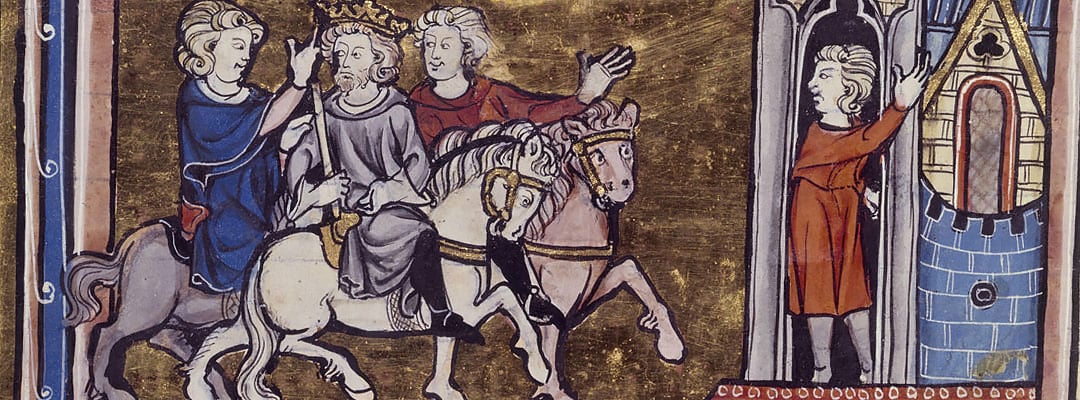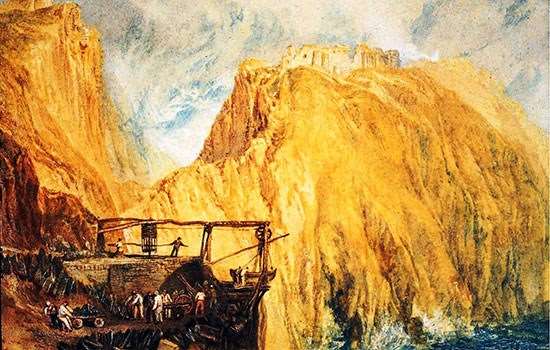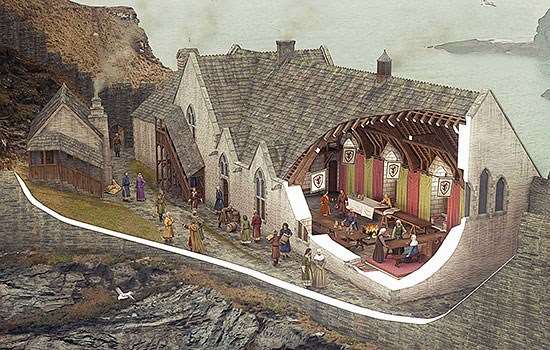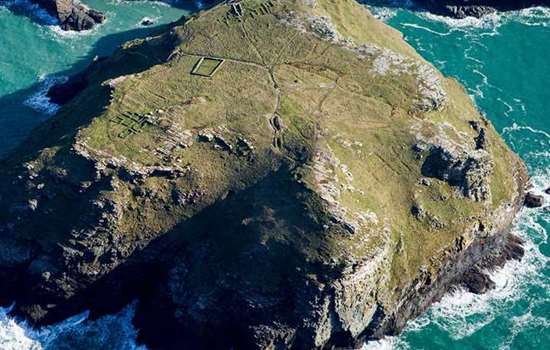Richard of Cornwall, King Arthur and Tintagel Castle
Why did one of the richest men in 13th-century Europe swap three manors for a rock?

RAW DEAL?
In May 1233 the younger brother of Henry III, Richard, Earl of Cornwall (1209–72), exchanged three of his manors for a small parcel of land on the north Cornish coast.
Stranger still, this land he coveted contained little more than an isolated and inhospitable rocky headland specifically mentioned in the deed of exchange – as ‘the island of Tyntagel’ – which was connected to the mainland by a narrow land bridge.
The key to making sense of this apparently disadvantageous deal – and why Earl Richard did what he did with his new manor – is the powerful hold that King Arthur exerted on the imaginations of medieval lords and kings.
CLIFF-TOP CASTLE
Richard proceeded to build a castle here, with an outer bailey on the cliff tops of the mainland and an inner ward with a great hall and chambers on the headland. He probably fortified the neck of land between the two wards with a gatehouse and perhaps some kind of drawbridge (now lost as a result of landslips).
But as castles went, this was a fairly small and unimpressive creation, and its location made it next to useless. What attracted the earl to Tintagel was something else, something literary: a reference in a text written in the previous century, the History of the Kings of Britain, by the cleric Geoffrey of Monmouth.
LEGENDARY LANDSCAPE
Tintagel plays a central role in Geoffrey’s racy story of how an ancient king of Britain, Uther Pendragon, is driven mad with lust for Ygerna, the wife of one of his barons, Gorlois of Cornwall. Gorlois prudently removes his wife to an impregnable stronghold on the coast, the castle of Tintagel, but then rather less prudently withdraws to another fortress nearby. The pursuing Uther and his men inspect Ygerna’s refuge and realise that no ordinary attack can succeed:
The castle is built high above the sea, which surrounds it on all sides, and there is no way in except that offered by a narrow isthmus of rock. Three armed soldiers could hold it against you, even if you stood there with the whole kingdom of Britain at your side.
At this point in the story, the ‘prophet’ Merlin proposes a supernatural remedy: by means of a magic potion, he transforms Uther into the exact likeness of Ygerna’s absent husband. The ruse is entirely successful. The guards of Tintagel allow him into the castle, and Ygerna takes him into her bed:
That night she conceived Arthur, the most famous of men, who subsequently won great renown by his outstanding bravery.
If these were not literary credentials enough, Tintagel also features in a second legend, which confusingly later became part of the Arthurian cycle, but almost certainly had completely separate origins. This was the story of the adulterous love of Tristan and Isolt, the wife of King Mark of Cornwall, Tristan’s uncle. Much more of the action in this late 12th-century story takes place at Tintagel, presented as the stronghold of King Mark.
CORNISH CONCEPTION
Earl Richard was a cultured and literary man who would have known these legends extremely well. The overwhelming likelihood is that he built the castle at Tintagel to recreate the scene from Geoffrey of Monmouth’s story and, in so doing, write himself into the mythology of King Arthur.
But beyond this, whom was he was trying to impress? Perhaps his principal target was the people of Cornwall, whose lord he had become in 1227, and whose land had once been a separate kingdom. The story of Arthur’s conception gave the Cornish an important stake in the legend, and the earl’s association of himself with Arthur can only have strengthened his claim to be overlord of the peninsula.
Perhaps, when Richard received the Welsh prince Dafydd ap Llywelyn at Tintagel in 1242, he was playing on Arthur’s status as a folk hero throughout western Britain.
ARTHUR MANIA
Alternatively, Earl Richard may simply have seen Arthur as an archetype of kingly and knightly virtue, celebrated as he was in literature and art throughout western Christendom.
Soon afterwards, other members of the earl’s family were creating similar ‘Arthurian’ monuments, notably his nephew, Edward I, who had a round table made at Winchester, seized the ‘Crown of Arthur’ from the Welsh princes, and rebuilt the supposed tomb of Arthur and Guinevere at Glastonbury Abbey in Somerset.
Tintagel Castle, meanwhile, only enjoyed the briefest moment of glory. Within as little as a decade the buildings on the cliff top were showing signs of instability; and by 1337, when the earldom was elevated into a duchy, the castle was described as ruinous – a state from which it never recovered.
By Jeremy Ashbee
Related content
-

History of Tintagel
Read an in-depth history of the castle from its origins in the Roman period to the present day, and find out why Tintagel’s history and legends are so intertwined.
-

Explore Medieval Tintagel
Use this reconstruction of Tintagel in about 1240 to discover how the medieval castle may have appeared soon after it was built.
-

Visit Tintagel Castle
Built half on the mainland and half on a jagged headland, Tintagel Castle is one of the most spectacular historic sites in Britain.